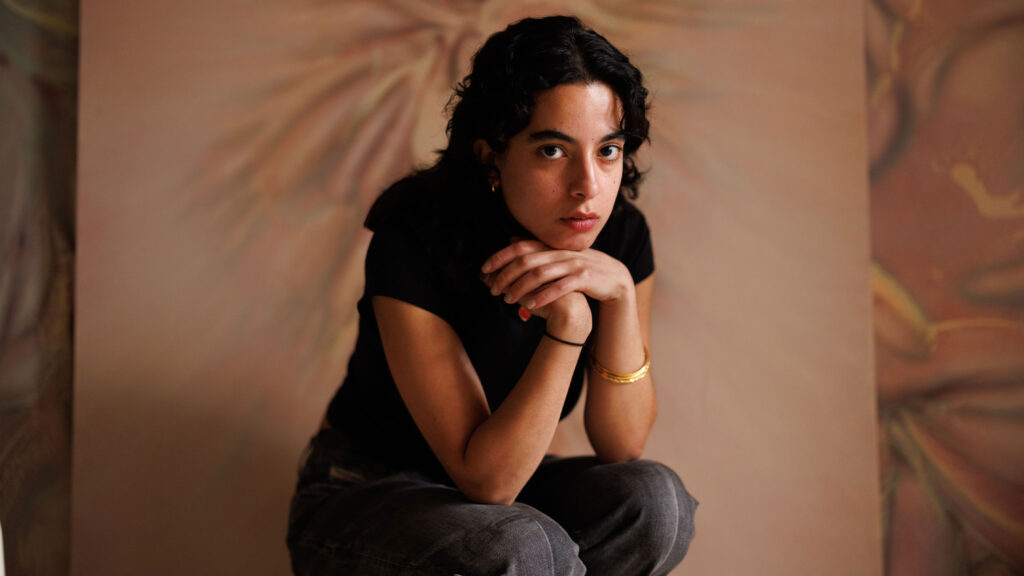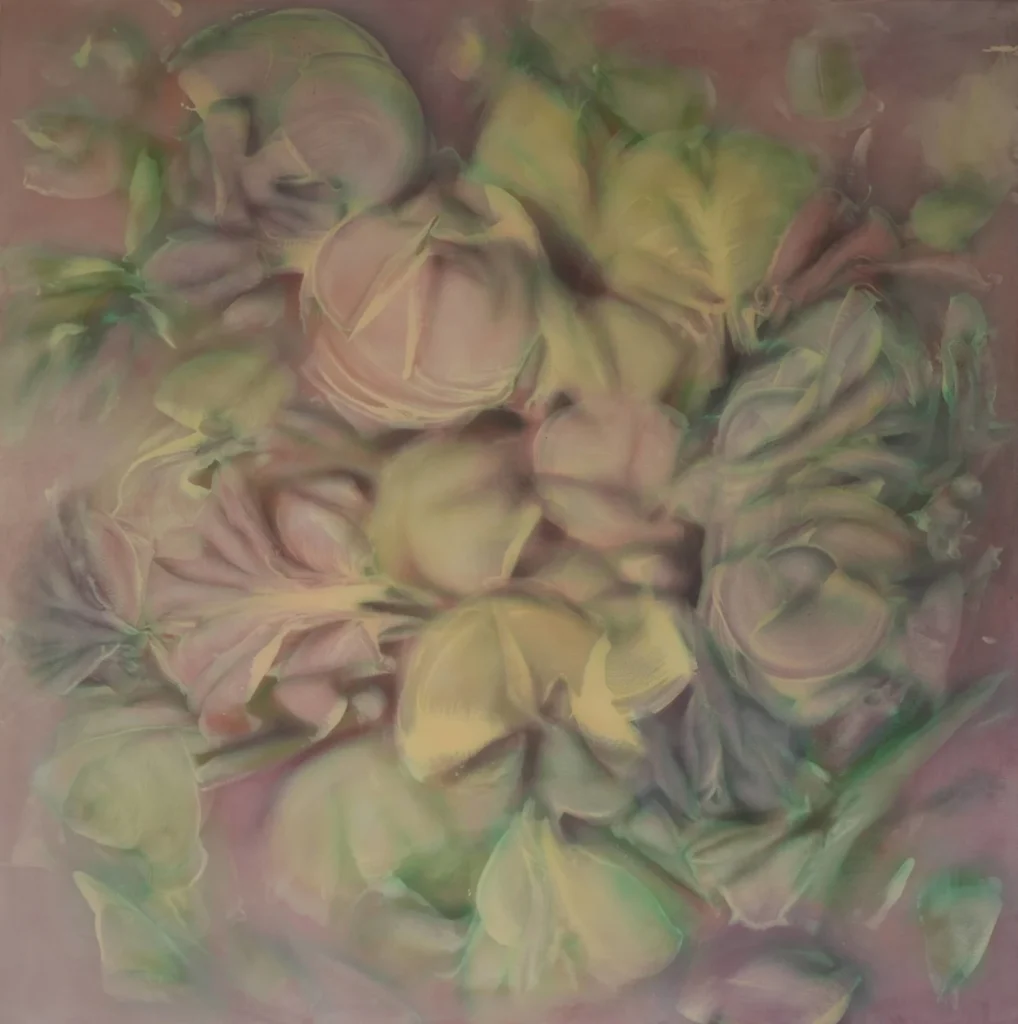
Multidisciplinary Iraqi artist Miramar Al Nayyar found profound inspiration in the patterns of sandstone during a 2022 visit to Bayda, a Neolithic archaeological site in southern Jordan. These formations, dating back to the Cambrian period millions of years ago, captivated her with their organic and abstract patterns, which stirred her subconscious mind. She envisioned bodies, waves, and animals within the beautifully lined, layered stones.
“These are illusions, but for me, they felt real,” Al Nayyar told The National. “They are movements frozen in time, and from the moment I saw them, the question came to me: what does my movement look like?”
This question forms the basis of Al Nayyar’s first solo exhibition in the UAE, “Moving Through the Ether,” held at Tabari Art Space in DIFC. Her artworks attempt to capture, recreate, or reimagine these natural formations on canvases, mostly measuring 190cm x 120cm, using her own movements and a palette of soft pastel shades. The results are light, airy, and inviting.
Al Nayyar’s new body of work is deeply personal, rooted in her grief over the loss of her father and the political and social turmoil in the world. Despite their ethereal and uplifting appearance, these pieces originate from a place of sorrow.
Following her father’s death in February last year, Al Nayyar found herself painting in lighter colors, a stark contrast to her previous darker, high-contrast works. “I never imagined I would paint something soft, gentle, and light,” she said. “But after my father died, I went to my studio and painted the lightest painting I’ve ever painted in my whole life.”
Although the paintings appear happy, they are infused with grief. “People were asking me why my paintings look happy if my father had died. But I wasn’t happy. The paintings look happy; people perceived them as happy, but they have a lot to do with grief,” Al Nayyar explained.
Her grief extends beyond personal loss to encompass global events, particularly the war in Gaza. This collective sorrow and frustration found an outlet in her art, creating beautiful forms that balance her inner turmoil with the chaos of the world.
“My mum tells me that wars are meant to leave you with a low vibration, in a state of fear, and, in this way, war wins,” she said. “I felt anxious with what was happening in the world, and that eventually leads to your heart closing up – at some point I felt so numb. So these works made me feel safe, my heart opened again.”

The organic shapes in her art, such as creased bedsheets, semi-floral structures, and morphed anatomical suggestions, reference a multitude of things. These stylized images, from soft, ambiguous fragments to flowing movements, are never overworked. “Movement is the base,” Al Nayyar stated. “Thoughts get materialized, thoughts take shape, and all of these natural formations took shape through movement. Movement shaped everything in nature over very long periods of time.”
Movement is central to her work, both in concept and execution. Her paintings are recordings of her physical movements, as she uses her arms and body as tools, applying colors in layers until she feels compelled to stop. Working in a semi-meditative state, she prepares meticulously to avoid distraction, allowing for a purely intuitive process. “I try as much as I can to avoid thinking during the process, because I want the feeling to come out as pure as possible,” she said. “Once I start thinking, I feel like I’m putting effort into the painting. And as long as it’s feeling effortless, then I’m good.”
In a world marked by imbalance, Al Nayyar sees her work as an attempt to heal and connect through the subconscious. “It’s a contribution, if not to the world, then it is to myself, because to me as an individual, I’m responsible to take care of my heart,” she said.

